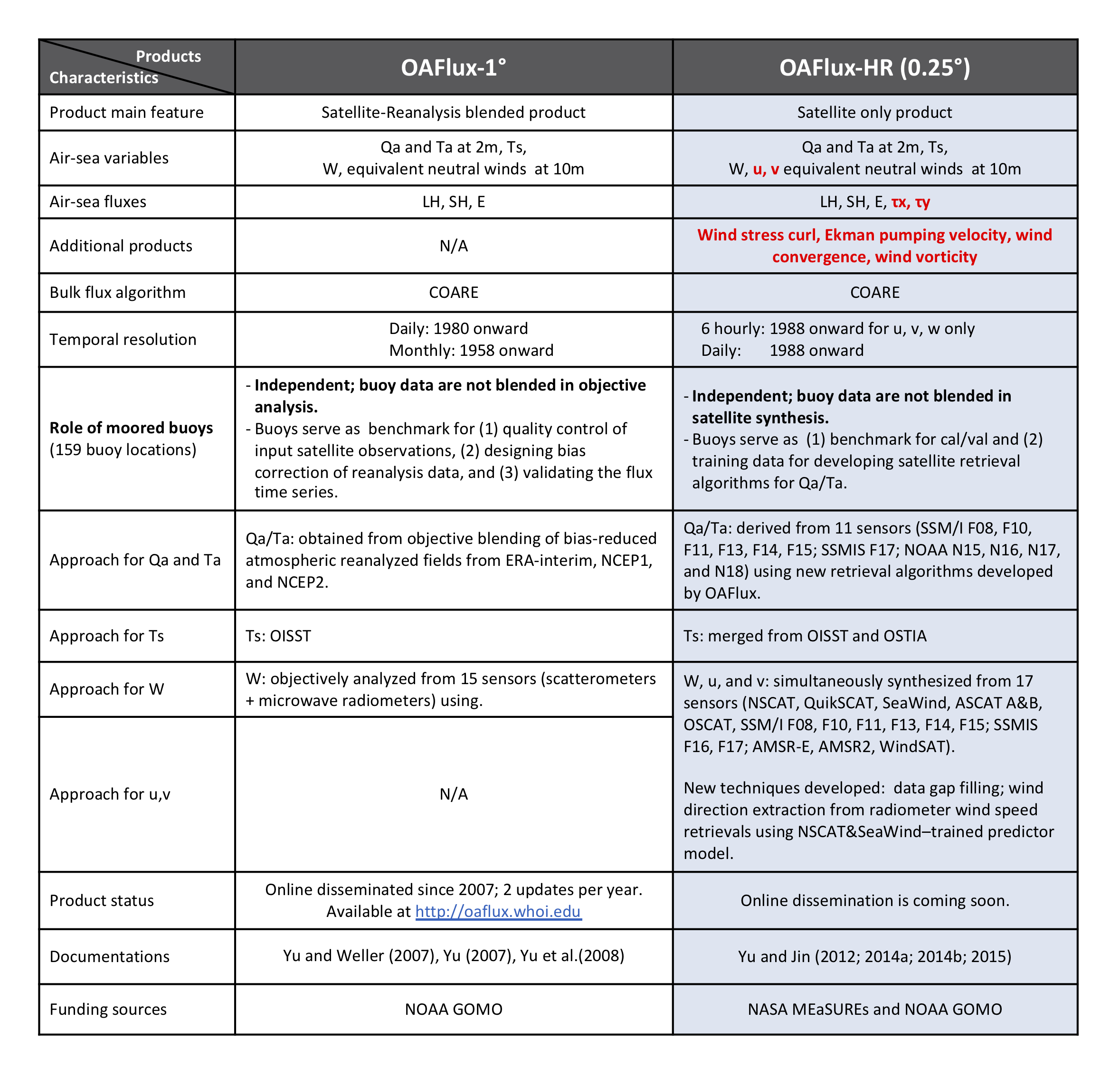Surface Flux Computation
Surface turbulent momentum fluxes, latent and sensible heat fluxes, and moisture flux (or ocean evaporation) over the global ocean cannot be directly observed from either satellite or in situ sensors. These fluxes are estimated using the following bulk flux parameterizations:
τx = ρ Cd |W - Ws| (u - us) (1)
τy = ρ Cd |W - Ws| (v - vs) (2)
QLH = ρ Lv CE |W - Ws| (qs - qa) (3)
QSH = ρ cp CH |W - Ws| (Ts - Ta) (4)
E = QLH/(ρwLv) (5)
where τx and τy are the respective zonal and meridional wind stress components, QLH the latent heat flux, QSH the sensible heat flux, and E the moisture flux. The input variables for calculating the fluxes (1)-(5) are the zonal (u), meridional wind (v) components, and wind speed (W) at a reference height, the ocean-surface current velocity (us, vs) and speed (Ws), sea-surface temperature (SST, Ts), the potential air temperature (Ta) and specific humidity (qa) at a reference height, and saturation specific humidity (qs) as a function of Ts and sea level pressure. The other constants are ρ the air density, ρw the sea-water density, Lv the latent heat of vaporization that is expressed as Lv = (2.501 – 0.00237×Ts)×1.06, and cp the isobaric specific heat. The turbulent transfer coefficients, Cd, CE, and CH, depend on wind speed, atmospheric stability, measurement height, surface roughness, surface wave height and wave age.
Major Differences between 1° and 0.25° analyses
(1) Estimation of qa and Ta:
- In OAFlux 0.25° analysis, qa and Ta are retrieved from 11 microwave radiometers and sounders.
- In OAFlux 1° analysis, qa and Ta are objectively synthesized from bias-corrected atmospheric reanalysis fields (ERA-interim, NCEP).
(2) Inclusion of (u, v) estimation in OAFlux 0.25° analysis
- OAFlux 1° analysis does not have (u, v) components
(3) Record length:
- OAFlux 1° analysis is six-decade long, starting from 1958.
- OAFlux 0.25° analysis is three-decade long, covering the satellite era from 1988 to present.
Major features of the two versions of products are listed in Table 1. For more details, read here.
Table 1. Differences between OAFlux 1° and 0.25° analyses